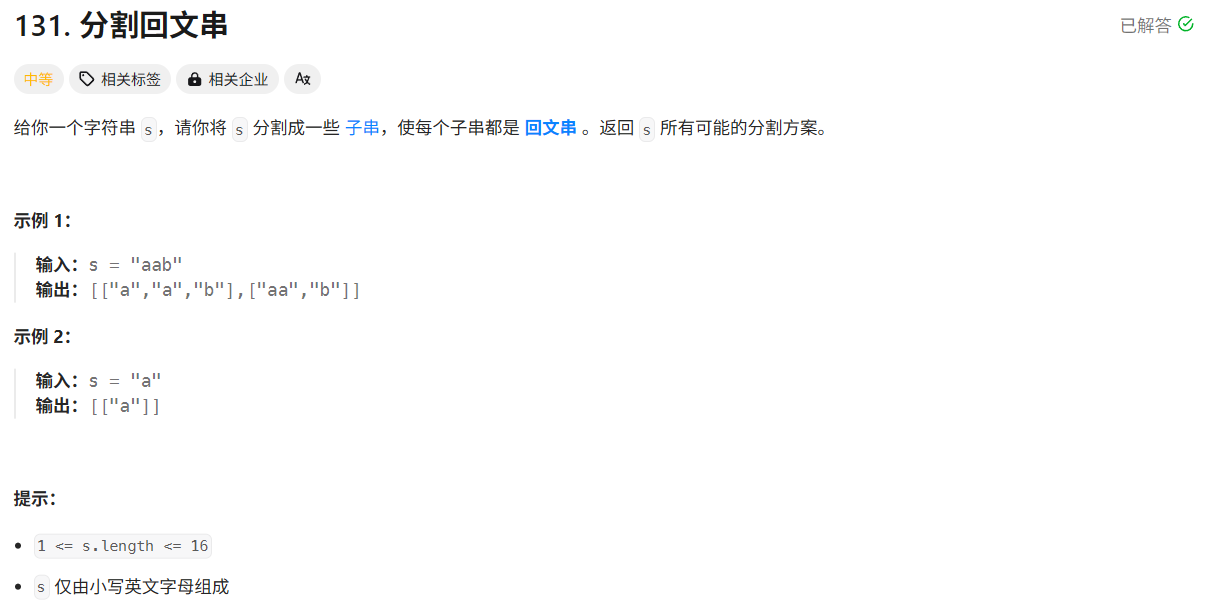
思路
这道题挺简单的,但是一开始想复杂了,故在此记录一下。
题目的意思就是将字符串$s$进行分割,且分割出来的每一个子串都必须时回文串。最简单有效的思路就是依次分割,先分割出第一个子串,在未分割的子串中再分割出第二个子串,……,依次这样下去,直到不存在未分割的子串。而对于每个要分割出来的子串我们都需要遍历其全部形式。
具体来说,设$s = “abcde”$,那么分割出来的第一个子串的形式有$a, ab, abc, abcd, abcde$,其对应的未分割子串依次为$bcde, cde, de, e, null$。所以,直接采用回溯法来做,直接看代码。
PS: 仔细思考会发现存在大量的字符串被反复判断是否是回文串,故可以采用动态划规($dp[i][j]$ 表示$s[i]$~ $s[j]$组成的子串是否是回文串)来提前记录每个子串是否是回文串,加速运行速度。这里就不给出具体代码了,请读者自行编写。
代码
1
2
3
4
5
6
7
8
9
10
11
12
13
14
15
16
17
18
19
20
21
22
23
24
25
26
27
28
29
30
31
32
33
34
35
36
37
38
39
40
41
42
43
44
45
46
47
48
49
50
51
52
53
54
55
56
57
58
59
60
61
|
class Solution
{
public:
vector<vector<string>> ans;
vector<string> output;
string str;
bool judge(const string& s)
{
int f = 0, b = s.size() - 1;
while (f <= b)
{
if (s[f] == s[b])
{
++f;
--b;
}
else
{
return false;
}
}
return true;
}
void backtrace(const string& s, size_t start_i)
{
// 判断是否已经将s划分完
if (start_i == s.size())
{
ans.emplace_back(output);
return;
}
// 遍历当前未划分子串中的第一个子串
for (size_t i = start_i; i < s.size(); ++i)
{
str = s.substr(start_i, i - start_i + 1);
if (judge(str))
{
// 当str是回文时才去划分下一个子串
output.emplace_back(str);
// 处理剩下未被划分的子串
backtrace(s, i + 1);
output.pop_back(); // 回退
}
}
}
vector<vector<string>> partition(string s)
{
ans.clear();
output.clear();
backtrace(s, 0);
return ans;
}
};
|
